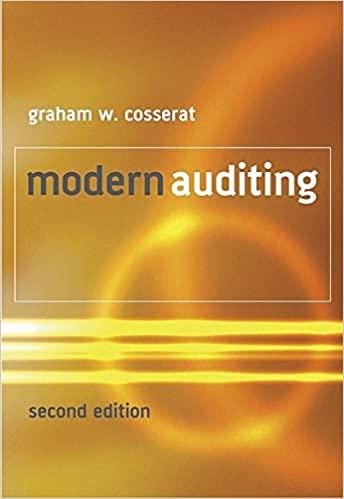Answered step by step
Verified Expert Solution
Question
1 Approved Answer
A first-year co-op student is trying to determine the amount of cash and cash equivalents that should be reported on a company's balance sheet. The
A first-year co-op student is trying to determine the amount of cash and cash equivalents that should be reported on a company's balance sheet. The following information was given to the student at year end. 1.The cash float for the cash registers totals $1,000. 2. The balance in the Petty Cash account is $380. At year end, the fund had $34 cash and receipts totalling $346. 3.The balance in the company's chequing account is $10,000. The company also has a U.S. bank account, which contained the equivalent of $18,000 Canadian at year end. 4.The company has overdraft protection of $11,900 on its chequing account. 5.The company has a separate bank account with a balance of $10,000. This consists of cash deposits paid by tenants who lease office space from the company. The deposits will be refunded to the tenants at the end of their leases. 6.The company has $16,500 of postdated cheques from customers for payment of accounts receivable. 7.The company has the following short-term investments: $43,400 in treasury bills with a maturity date of less than 90 days. . $13,300 in a guaranteed investment certificate that matures in six months. 8.The balance in the company owner's personal bank account is $2,200. 9.The company has NSF cheques from customers totalling $800 that were returned by the bank. Calculate the amount of cash and cash equivalents that should be reported on the year-end balance sheet as a current asset. Cash and cash equivalents $
Step by Step Solution
There are 3 Steps involved in it
Step: 1

Get Instant Access to Expert-Tailored Solutions
See step-by-step solutions with expert insights and AI powered tools for academic success
Step: 2

Step: 3

Ace Your Homework with AI
Get the answers you need in no time with our AI-driven, step-by-step assistance
Get Started


